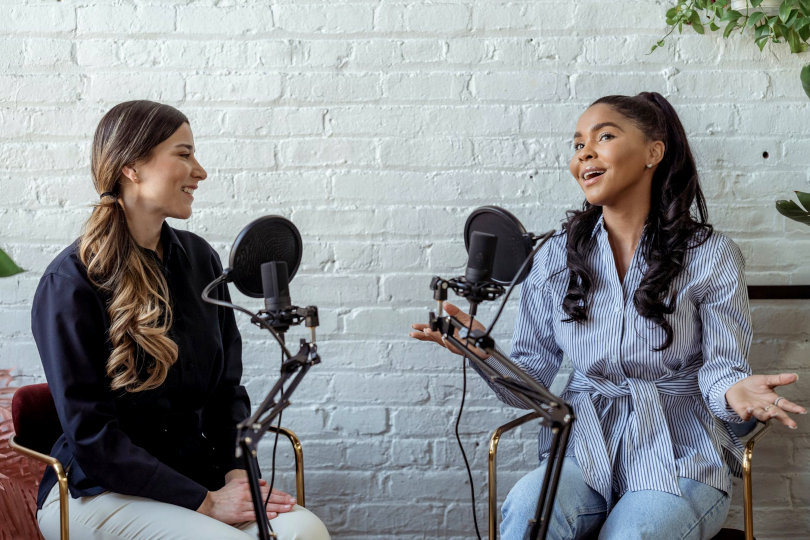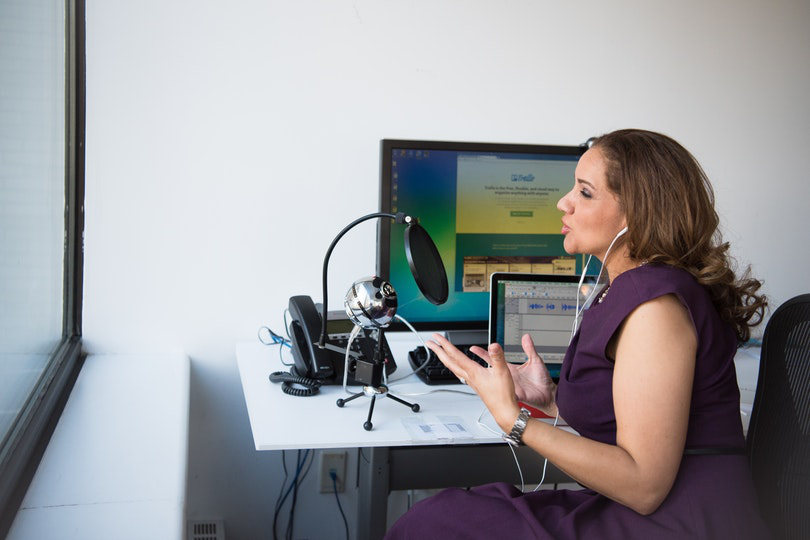The world of podcasting has changed a lot in the last decade. A couple of years ago, podcasts were recorded on our iPhones, and Skype was used for interviews. Now there are many more options available to podcasters. For example, cameras are designed specifically for video content like YouTube, there are microphones available to make your audio sound better than ever before, and noise-canceling headphones.
This blog post will discuss some of these new technologies and what they can do for you.

Upgrade Your Headphones
Being able to hear your guest is significant when creating a podcast. You don’t want to miss anything the other person is saying. Good headphones will also allow you to hear problems with the sound and make adjustments during the interview. There are a few features to look for in your new headphones.
Noise-canceling is useful for blocking out outside sounds, such as other people in the room or a loud air conditioner. It also helps to focus on what is being said and not be distracted by background noise.
Plush ear cups are most comfortable when wearing them for hours at a time or having them pressed against your head during an interview. This is because the material allows them to breathe and not trap heat.
The cord should be long enough for you to move around freely, but it’s also crucial that there is no audio delay. Some cords will cause a slight echo because they are too long. This can be very distracting to the listener.
It is important that your headphones are durable and can stand up to daily use. This will save you time in the long run because they won’t break every few months. You will avoid downtime while ordering new ones or waiting for them to arrive.
Time to Pick Up a Professional Microphone
Let’s upgrade your sound quality for this year and get a professional microphone with superior audio quality. There are many choices for microphones, so let us look at what features are the best for YouTube.
You should consider the type of microphone that is right for you. There are many types, but we will focus on dynamic and condenser mics. Dynamic mics pick up sound through a diaphragm which is attached to a coil around an electromagnet. When audio hits this element, it moves back and forth due to sonic waves. Dynamic mics are great for speaking at close range, but they may pick up too much background noise because of their design.
A condenser microphone uses an electrically-charged diaphragm that can create sound waves when it moves back and forth between two plates or membranes in the mic capsule. Because these types of condensers can pick up more detail from a sound, they are ideal for recording instruments and vocals. However, a drawback is that condensers will pick up background noise, so they need to be placed close to the source of audio being recorded.
To choose the right microphone for you, consider what your podcast is about and who it’s targeted at. For instance, for a podcast about music live production and technical services & recording, you might want to get a large-diaphragm condenser mic that can pick up all the detail in your sound.
On the other hand, if this were an interview show, it would be better suited with a dynamic microphone so viewers could understand what each person is saying clearly without picking up any background noise. A lavalier mic or shotgun mics can be dynamic or condenser types.

Now that you know about different microphones and what they can do let’s look at some great choices to help your show sound better than ever before. You will want a mic that is designed for YouTube like one by Audio-Technica. Audio-Technica microphones may be the best microphone for YouTube and feature an XLR connection, so it works with professional mixers and has not one headphone jack, but two. This way, they can hear what is being recorded in real-time.
It also features a USB cable connection, so there are no drivers needed for your computer, which means this mic could be used with any DAW or editing software program you use. We recommend that you use this mic with Audacity because it is free and easy to learn, making your podcast much easier.
Audacity also allows you to edit out mistakes in the show quickly, so if someone stumbles on a word or pauses for too long, you can cut those parts of the audio file without affecting what was said before or after.
You can also get a microphone that is designed for recording instruments like the Apogee MiC 96k. This mic connects to your iOS device, and it comes with an app that allows you to control every aspect of recording right from your phone. This mic is an incredible tool because it can perfectly record 24-bit quality audio and capture everything in the room.
This microphone is great for podcasters who want higher sound quality than what dynamic microphones allow. Still, it’s also great for anyone who wants to record guitar or other instruments as part of their podcast. With so many features and options available, a little research will help you find the best mic that fits your show perfectly.
Get the Most Out of Podcast Videos
Video recordings of your podcasts have many benefits. Videos are much friendlier to websites, marketing, and SEO. Video recording your podcast does not have to be overly complicated. One of the easiest ways to start is with your smartphone. While smartphones are not the best for YouTube video, it is better than no video at all.
Finding the best camera for YouTube is not hard if you want to upgrade your video quality. Look for a camera with full HD, 1080P at least, or even 4k resolution. Two types of cameras to look at are a pocket cinema camera or a mirrorless camera.
Pocket cinema cameras are not cheap, but they can create a professional-looking video that is easy to edit.
Mirrorless cameras can be more affordable than a pocket cinema camera and are lightweight compared to traditional DSLRs. Sony cameras are some of the best mirrorless cameras.
A few of the features you will want your camera to have are autofocus, optical image stabilization, and a fully articulating screen for framing your shots. These features will help you create a professional-looking video that stands out compared to the video of others.
Video editing apps are plentiful and valuable when it comes to creating videos for your podcasts. A few good examples of these apps are FiLMic Pro, Vlogger Go Viral Video Maker Studio, Ripl—iMovie Lite Edition, iMotion HD Video Presentation App For iPad And iPhone, Replay Video Editor, and iMovie.

In Conclusion
As you can see, there are many different types of microphones and features that will help your podcast sound better than ever before. It is important to look at what kind of mic best suits the needs of your show and how much you want to spend on it. Different mics have pros and cons, so make sure you do some research before buying one.
When looking for a camera capable of recording in full HD 1080P or higher resolution, find something lightweight with autofocus capabilities and optical image stabilization if possible. These features will give your videos an edge over others who may not be using them.




